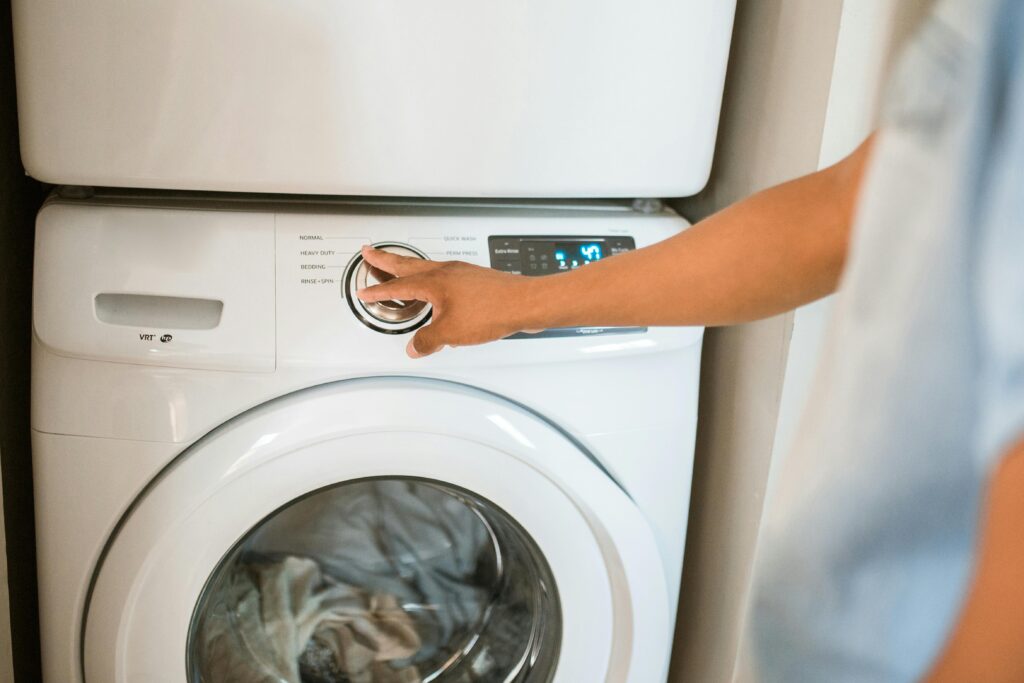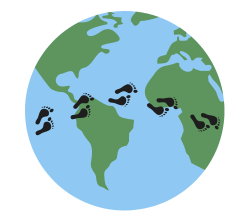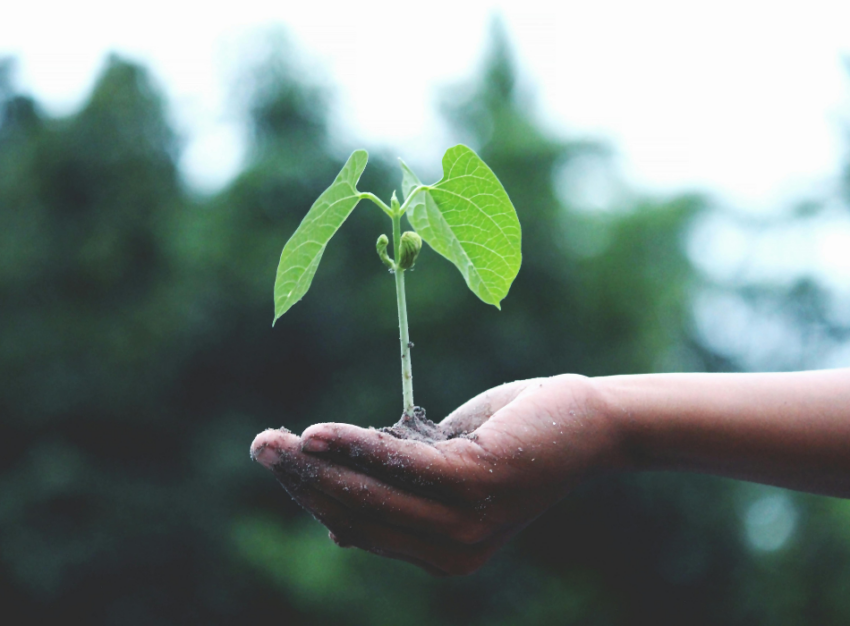It’s Earth Month, and many people are looking for ways to help the planet!
Here are 10 easy actions you can take. In most cases, you don’t need any special supplies, and most options are free or low cost!
Use reusable products
There are many reusable alternatives to single-use items, including reusable shopping bags, water bottles, produce bags, napkins, coffee cups and menstrual pads. For more suggestions for reusable swaps, check out Plastic Free July and my post on low-waste kitchen swaps.
How it helps: The world produces about 350 million tonnes of plastic waste annually, with one to two million tonnes of this plastic entering our oceans. And not all plastic waste gets recycled. Choosing reusable helps keep waste out of landfills and the environment, and often saves money over the long term!
Wash your laundry in cold water

Doing laundry is one of the more energy-intensive chores. Washing in cold water is an easy way to save energy. Most clothes can be washed in cold water. In many cases, washing in cold water can even extend the life of clothing! Be sure to check the label to find out the optimal temperature for washing a particular item.
Get more sustainable laundry tips here.
How it helps: About 90% of the energy a washing machine consumes goes towards heating the water. Washing in cold water cuts down on energy use in a big way (up to 60%, according to some estimates).
Switch to LED bulbs
As your incandescent and CFL light bulbs burn out, switch to LED bulbs! LEDs use significantly less energy and last much longer than both incandescent and CFL bulbs. Though LEDs are a bit more expensive upfront, their efficiency more than makes up for it!
Get more energy-efficient lighting tips here.
How it helps: LED bulbs are highly energy efficient. They use at least 75% less energy than incandescent bulbs. A good-quality LED can last up to 30 times longer than an incandescent bulb and three to five times longer than a CFL one. Over time, this adds up to significant energy and cost savings!
Switch to receiving bills electronically
Many banks and utilities have an option to receive your bills and statements electronically. This is an easy and secure way to cut down on paper waste. Just make sure to delete the document when you’re done with it.
Get more tips for reducing paper use here.
How it helps: Globally, we produce about 420 million tons of paper and cardboard annually. Paper production is intensive on trees, water and energy. Producing one kilogram of paper requires two to three times its weight in trees, while producing one ton of paper requires about 300 to 400 tons of water. Every effort to save paper helps!
Turn the heat down a little

In the winter, try turning the heat down by a degree or two. If you get chilly, you can always bundle up in a sweater and fuzzy socks. If you have a programmable thermostat, you can also set the temperature to be slightly lower when you’re asleep and away from home. Note that a comfortable room temperature should be in the range of 18 to 21°C.
How it helps: In areas with cold winters, heating accounts for 30 to 50% of annual household energy costs. According to Natural Resources Canada, reducing the temperature by 1°C over an eight-hour period can reduce energy consumption by about 2%.
Switch to a green search engine
There are several search engines that claim to be greener than Google, including Search for Trees, Ecosia and Oceanhero. View a longer list here. These search engines may use their advertising revenue to plant trees or clean up the ocean or may power their servers with renewable energy. Switching to a green search engine is an easy way to help the planet while doing an activity you’re most likely already doing!
How it helps: Google searches may seem intangible, but there’s an invisible network of servers and other equipment powering the flows of data. Each Google search uses the equivalent of 0.3 watts hours of electricity and produces 0.2 grams of CO2. This may not seem like much, but it really adds up with all the searches that are completed daily (8.5 billion, according to some counts).
Unplug appliances when not in use
Toasters, hair dryers, phone chargers, entertainment systems … The average Canadian home has more than 25 devices that consume phantom power, or the energy that’s used when a device is plugged in but not in active use. Many of these devices are only used sporadically and can be unplugged the rest of the time. Or alternatively you can plug several devices into a power bar and turn the power bar off when you’re not using them.
Learn more about phantom power here.
How it helps: On average, devices consume 75% of their electricity when they aren’t even turned on. Phantom power can account for up to 10% of home energy use. Unplugging devices when not in use is an easy way to prevent this waste of energy.
Participate in a community cleanup

During Earth Month and year-round, many community groups and municipalities organize cleanups to tidy up local parks, neighbourhoods and waterways! If you’d like to participate in a cleanup, check this global map from Earthday.org and events organized by A Greener Future if you’re based in Canada. And if you’d like to organize your own cleanup, check out these tips from Earthday.org.
How it helps: Does the litter you spot on your daily walk bother you? Cleanups help tidy up the local environment and build community among individuals who care about sustainability and protecting the planet.
Reduce your consumption of meat and dairy
Meat and dairy are some of the most carbon-intensive foods on the planet. Depending on how much of these foods you consume currently, you might consider participating in Meatless Mondays or trying a plant-based swap like non-dairy milk, plant-based yogurt or a vegan egg replacement. For more, check out my posts with tips for going vegetarian or vegan.
How it helps: Meat and dairy production account for about 14.5% of global greenhouse gas emissions. On the flip side, emissions from plant-based foods are typically 10 to 50 times smaller than those from animal products.
Walk, bike or take transit where possible
For many short trips, you can walk or bike. Both methods are free and don’t generate any emissions! For longer trips, explore taking public transit. Even if it’s not possible for you to go fully car free, taking transit some of the time reduces your transportation-related emissions.
How it helps: A typical passenger vehicle emits about 4.6 metric tons of carbon dioxide per year. Taking public transit, meanwhile, can reduce carbon emissions by 45% compared to driving alone.
Easy actions to help the planet this Earth Month
From sustainable transportation and dietary changes to waste reduction and energy efficiency, there are many simple ways to help the planet this Earth Month and beyond. And the best part is that many of the actions are free and don’t require any special equipment!
I want to know: What easy changes have you made to help the planet?
Categories and tags:
Share this post:

